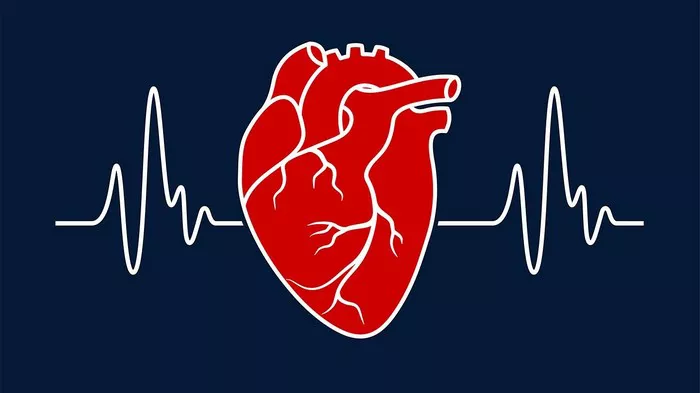Bigeminy is a cardiac arrhythmia characterized by a pattern in which every other heartbeat is a premature ventricular contraction (PVC). This condition can be alarming and may cause symptoms such as palpitations, dizziness, and shortness of breath. While bigeminy itself may not always be life-threatening, it can indicate underlying heart issues that require medical attention. In this article, we will explore what bigeminy is, its causes, symptoms, diagnosis, and most importantly, what can be done to manage and treat this condition effectively.
Understanding Bigeminy:
Bigeminy is a type of arrhythmia that falls under the broader category of ventricular ectopy, which refers to abnormal heart rhythms originating in the ventricles. In bigeminy, the heart rhythm alternates between a normal heartbeat and a premature ventricular contraction. This results in a pattern where every other heartbeat is premature, leading to a distinctive “thump-thump, pause, thump-thump, pause” rhythm on an electrocardiogram (ECG).
Causes of Bigeminy:
Several factors can contribute to the development of bigeminy. These include:
1. Electrolyte Imbalances: Abnormal levels of potassium, magnesium, or calcium in the blood can disrupt the electrical signals that regulate heart rhythm, leading to arrhythmias like bigeminy.
2. Heart Disease: Conditions such as coronary artery disease, myocardial infarction (heart attack), cardiomyopathy, and heart failure can increase the risk of arrhythmias, including bigeminy.
3. Stimulants: Certain substances like caffeine, nicotine, and illicit drugs can stimulate the heart and trigger arrhythmias in susceptible individuals.
4. Medications: Some medications, especially those that affect the heart’s electrical conduction system, may increase the likelihood of developing arrhythmias like bigeminy.
5. Structural Heart Abnormalities: Anatomical abnormalities in the heart, such as congenital defects or valve disorders, can disrupt normal cardiac function and lead to arrhythmias.
Symptoms of Bigeminy:
The symptoms of bigeminy can vary depending on the individual and the underlying cause. Common symptoms associated with bigeminy include:
1. Palpitations: A sensation of irregular or skipped heartbeats, often described as a fluttering or pounding in the chest.
2. Dizziness or Lightheadedness: Feeling faint or unsteady, especially during episodes of arrhythmia.
3. Shortness of Breath: Difficulty breathing or a sensation of breathlessness, particularly during physical activity or periods of increased heart rate.
4. Chest Discomfort: Mild chest pain or discomfort may occur in some cases, especially if the arrhythmia is causing inadequate blood flow to the heart muscle.
5. Fatigue: Feeling tired or lethargic, which can be exacerbated by the irregular heart rhythm and reduced cardiac output.
It is important to note that some individuals with bigeminy may not experience any noticeable symptoms and may only discover the arrhythmia during routine medical exams or diagnostic tests.
Diagnosis of Bigeminy:
Diagnosing bigeminy typically involves a combination of medical history review, physical examination, and diagnostic tests. Healthcare providers may perform the following:
1. Electrocardiogram (ECG): This non-invasive test records the heart’s electrical activity and can identify the characteristic pattern of bigeminy (alternating normal beats with premature ventricular contractions).
2. Holter Monitoring: A portable device worn by the patient for 24 to 48 hours to continuously record the heart’s electrical activity, providing a more comprehensive assessment of arrhythmias over time.
3. Echocardiogram: An ultrasound imaging test that evaluates the heart’s structure and function, helping to identify any underlying cardiac abnormalities or contributing factors.
4. Blood Tests: Checking electrolyte levels, thyroid function, and cardiac biomarkers can help rule out underlying conditions or triggers for arrhythmias.
5. Stress Test: Assessing heart rhythm and function during physical exertion can reveal arrhythmias that may not occur at rest.
Management and Treatment of Bigeminy:
The approach to managing and treating bigeminy depends on several factors, including the severity of symptoms, underlying causes, and individual patient considerations. Treatment strategies may include:
1. Lifestyle Modifications: Encouraging healthy lifestyle habits such as regular exercise, a balanced diet low in stimulants (e.g., caffeine, nicotine), stress management techniques, and adequate sleep can help improve overall cardiovascular health and reduce arrhythmia triggers.
2. Medications: In some cases, medications may be prescribed to control heart rhythm and reduce the frequency and severity of arrhythmias. Common medications for arrhythmia management include beta-blockers, calcium channel blockers, antiarrhythmic drugs, and electrolyte supplements if deficiencies are identified.
3. Cardioversion: In certain situations, cardioversion may be recommended to restore normal heart rhythm. This can be done using medications (pharmacological cardioversion) or electrical shock (electrical cardioversion) under controlled medical supervision.
4. Implantable Devices: For individuals with recurrent or high-risk arrhythmias, implantable devices such as pacemakers or implantable cardioverter-defibrillators (ICDs) may be considered. These devices can monitor heart rhythm continuously and deliver appropriate therapies (e.g., pacing, cardioversion, defibrillation) when needed.
5. Catheter Ablation: In cases where arrhythmias are resistant to medication or associated with specific cardiac abnormalities (e.g., accessory pathways), catheter ablation may be recommended. This procedure involves using radiofrequency energy or cryotherapy to target and eliminate abnormal electrical pathways in the heart.
Conclusion:
Bigeminy is a cardiac arrhythmia characterized by alternating normal heartbeats with premature ventricular contractions (PVCs). While it may not always cause symptoms, it can indicate underlying heart issues that require medical attention. Diagnosis typically involves electrocardiogram (ECG) monitoring and other diagnostic tests to assess heart function and identify contributing factors. Management strategies may include lifestyle modifications, medications, cardioversion, implantable devices, and catheter ablation, tailored to individual patient needs. Early detection and appropriate management can help improve outcomes and reduce the risk of complications associated with bigeminy and other arrhythmias. If you suspect you may have bigeminy or experience symptoms of arrhythmia, it is essential to consult a healthcare professional for evaluation and guidance.


